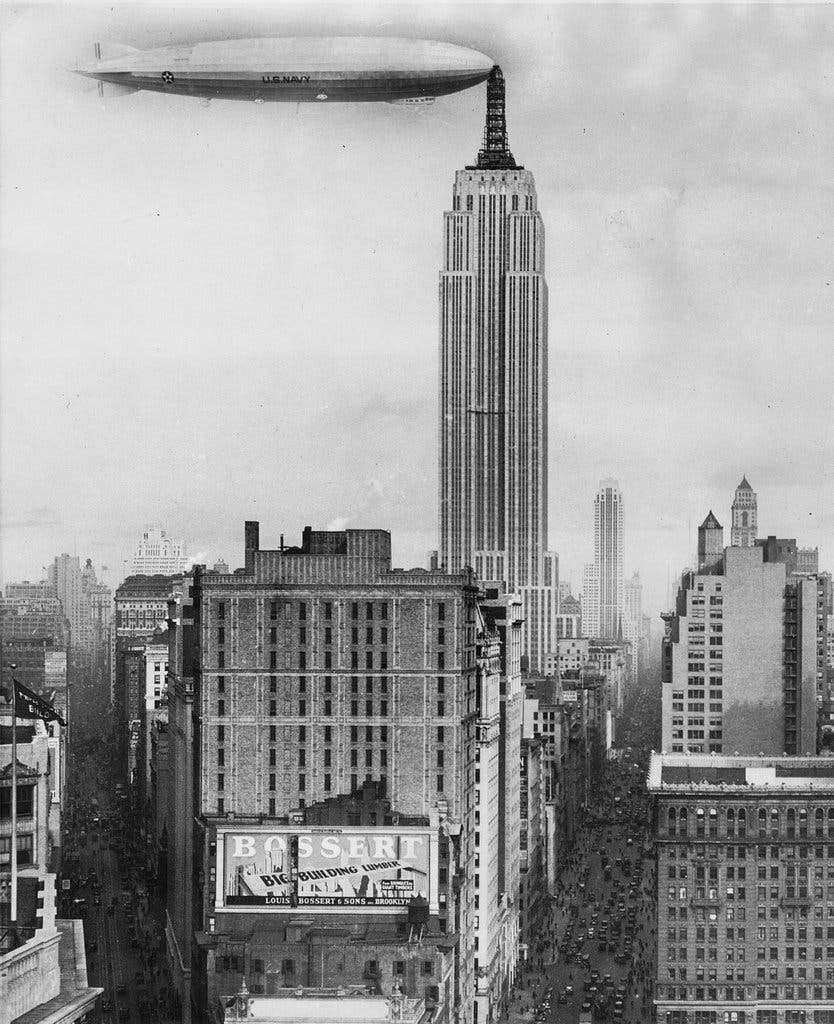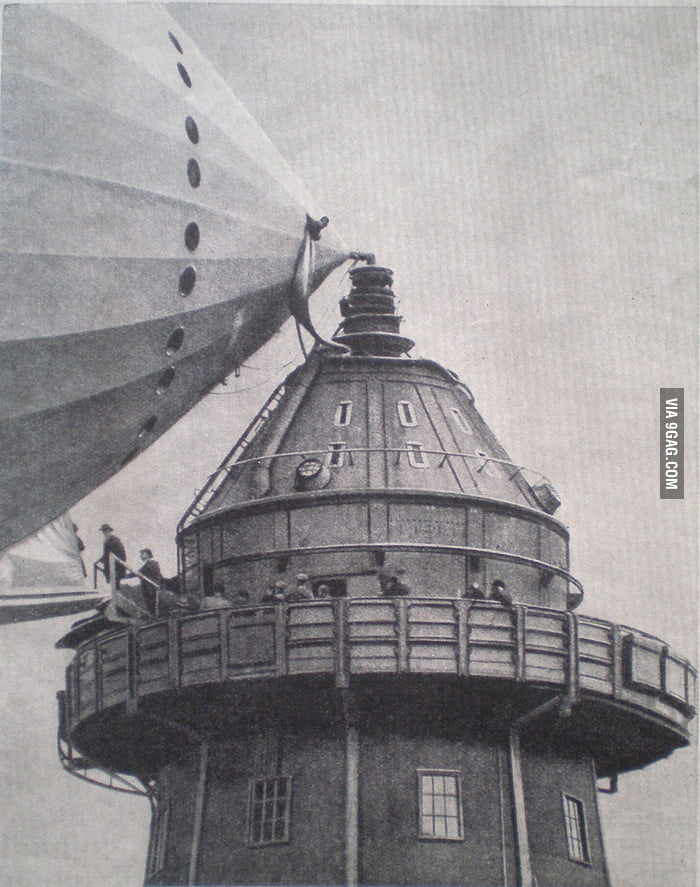In 1929, the Empire State Building was proclaimed to be the tallest building in the world, topped with a dirigible mooring mast that could ‘accommodate passengers for the already existing transatlantic routes, and for the routes planned to South America, the West Coast, and across the Pacific’ (Tauranac). The mooring mast was installed to provide unprecedented, accessible air travel, on top of one of the world’s most recognisable landmarks. New York would therefore become the epicentre of modern aerospace technology in the United States. However, an obvious drawback to this mooring site is the lack of adequate terminal facilities, with passengers expected to walk down a plank extended from the blimp to the platform on the 102nd floor. It was proposed that buildings were to be knocked down to allow for a “sky terminal” but the costs to this were far too great, so it was dropped. John Tuaranac discusses how only one dirigible ever made contact with the Empire State Building in 1931, and it was “brief at best”:

